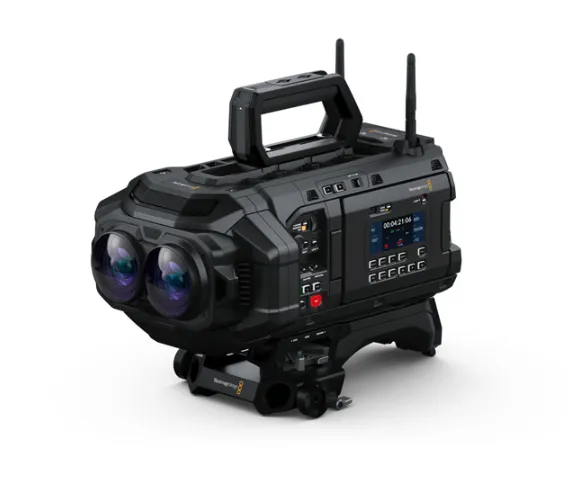Blackmagic Design has unveiled the URSA Cine Immersive Camera, a high-end system built specifically for producing next-generation video experiences on Apple Vision Pro. With a price tag of $29,995 and shipments scheduled to begin in early 2025, the camera is positioned as a professional tool aimed at reshaping immersive media production.
First announced in mid-2024, the URSA Cine Immersive is engineered as a complete solution for capturing, editing, and delivering Apple’s unique immersive video format. This format supports 8K resolution in 3D, a 180-degree viewing angle, and Spatial Audio—elements designed to give Vision Pro users an unmatched sense of presence and realism.
A Closer Look at the Technology
The camera captures stereoscopic 3D video at 8160×7200 resolution and 90 frames per second, offering incredibly sharp visuals with fluid motion. Advanced pixel synchronization ensures smooth output, while 16 stops of dynamic range capture subtle details in highlights and shadows.
Its build quality balances durability and portability, thanks to a magnesium alloy body reinforced with carbon fiber composites. Dual 5-inch HDR touchscreens provide direct on-device control, reducing reliance on external monitors. For professionals, the system includes robust connectivity options such as 12G-SDI, 10G Ethernet, USB-C, and XLR audio support.
Blackmagic is also preparing updates to its DaVinci Resolve Studio software, expected in 2025, to fully integrate Apple Immersive Video into the post-production workflow.
Shaping the Future of Immersive Media
Grant Petty, CEO of Blackmagic Design, emphasized that the camera is intended to bring audiences closer to the action than ever before, describing the system as a pathway to lifelike cinematic storytelling. While Apple has already introduced several immersive titles like Submerged and Concert for One, third-party content has been limited. The URSA Cine Immersive Camera aims to fill that gap by giving creators the tools to expand Vision Pro’s library.
Challenges Ahead
The URSA Cine Immersive Camera enters a market with strong competition, including RED’s V-RAPTOR 8K VV, which falls in a similar price range. Its steep cost means it will likely be adopted mainly by professional studios rather than independent creators or hobbyists. This could slow down the widespread adoption of immersive content, leaving mass-market applications still out of reach.
Even with these challenges, the launch of the URSA Cine Immersive marks a pivotal moment in immersive storytelling. If creators embrace the technology and expand the catalog of Vision Pro experiences, the headset could become a central platform for a new era of cinematic media.
